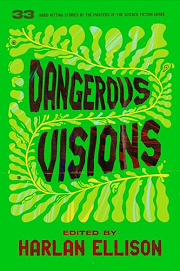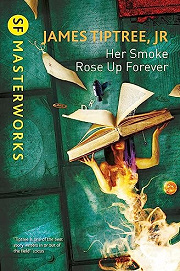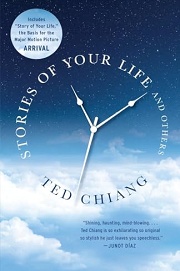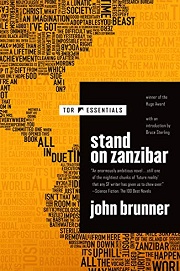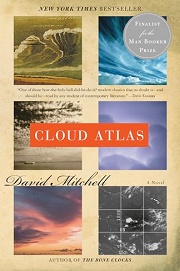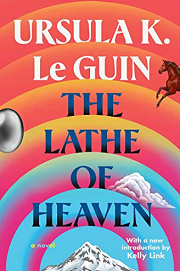Share your thoughts in a quick Shelf Talk!
Dangerous Visions by edited by Harlan Ellison
Taboos are shattered and the future thrown wide open in a legendary anthology that helped redefine speculative fiction. With bold voices challenging every boundary, Dangerous Visions is a landmark of the New Wave—provocative, visionary, and utterly unmissable.
Have you read this book? Share what you liked (or didn’t), and we’ll use your answers to recommend your next favorite read!
Love Dangerous Visions but not sure what to read next?
These picks are popular with readers who enjoyed this book. Complete a quick Shelf Talk to get recommendations made just for you! Warning: possible spoilers for Dangerous Visions below.
In Dangerous Visions, did you enjoy ...
... the provocative range of boundary‑pushing short stories like "Aye, and Gomorrah..." and "Gonna Roll the Bones"?
Her Smoke Rose Up Forever by James Tiptree Jr.
If the kaleidoscope of tones and shocks in Dangerous Visions hooked you, Tiptree’s career‑spanning collection will hit the same nerve. Stories like "The Girl Who Was Plugged In" fuse body‑mod tech with media satire, while "And I Awoke and Found Me Here on the Cold Hill’s Side" delivers the same unsettling, idea‑rich jolt you felt jumping from Delany’s "Aye, and Gomorrah..." to Leiber’s "Gonna Roll the Bones." Each piece is a self‑contained gut punch—intense, incisive, and unforgettable.
... the heady, thought‑provoking what‑ifs behind pieces like "Faith of Our Fathers" and "Riders of the Purple Wage"?
Stories of Your Life and Others by Ted Chiang
Chiang delivers that rare blend of rigorous speculation and philosophical depth you found in Philip K. Dick’s hallucinatory politics and Philip José Farmer’s social provocations. From the causality‑bending "Story of Your Life" to the theological engineering of "Hell Is the Absence of God," these tales invite the same kind of intellectual wrestling and after‑the‑last‑page reflection that Dangerous Visions sparks.
... the sharp, satirical bite and cultural skewering seen in "Riders of the Purple Wage" and "Carcinoma Angels"?
Stand on Zanzibar by John Brunner
Craving more razor‑edged social satire? Brunner’s mosaic future—news tickers, ads, dossiers, and micro‑narratives—skewers consumerism and overpopulation with the same audacity that Farmer and Spinrad brought to their Dangerous Visions entries. It’s bleakly funny, scathing, and frighteningly prescient—an immersive critique that lets you laugh right up until it hurts.
... the formal playfulness and voice‑shifting experimentation that made pieces like "Riders of the Purple Wage" and "Aye, and Gomorrah..." pop?
Cloud Atlas by David Mitchell
If you loved how Dangerous Visions kept reinventing itself—pastiche, slangy subcultures, daring structures—Cloud Atlas takes that shapeshifting to a dazzling extreme. Six nested tales ripple across eras, from a 19th‑century diary to a post‑collapse oral history, each voice distinct yet echoing the others with motifs and revelations that click into place in a way that feels ingenious and audacious.
... the reality‑slipping, dreamlike unease of "Faith of Our Fathers" and the body‑mind disorientation of "Carcinoma Angels"?
The Lathe Of Heaven by Ursula K. Le Guin
Le Guin’s tale of George Orr, whose dreams rewrite reality while a well‑meaning psychiatrist exploits them, captures the same eerie, destabilizing vibe as Dick’s politically paranoid visions and Spinrad’s existential body horror. It’s quietly nightmarish and profoundly humane—surreal shifts that keep you off balance while the ethical and emotional stakes deepen with every page.
Unlock your personalized book recommendations! Just take a quick Shelf Talk for Dangerous Visions by edited by Harlan Ellison. It’s only a few questions and takes less than a minute.
